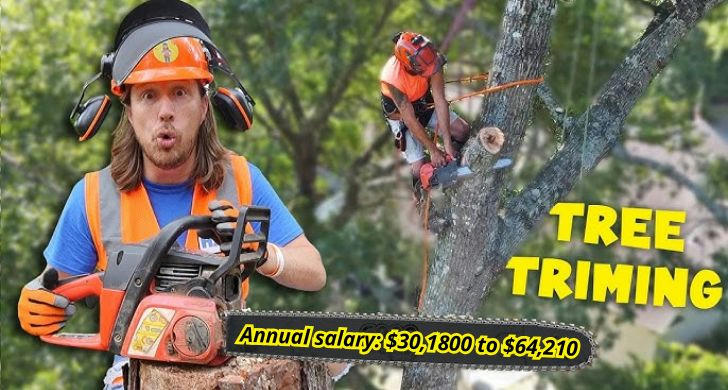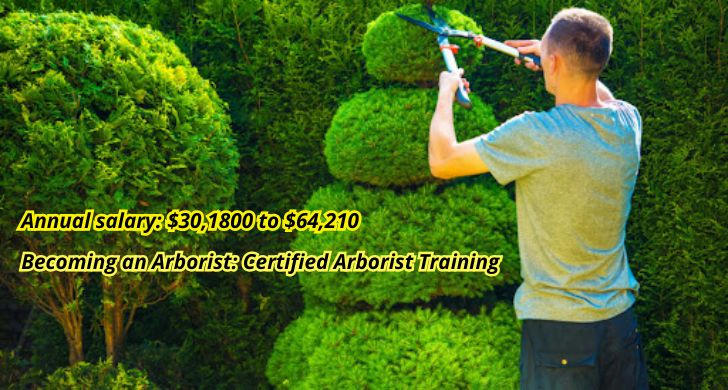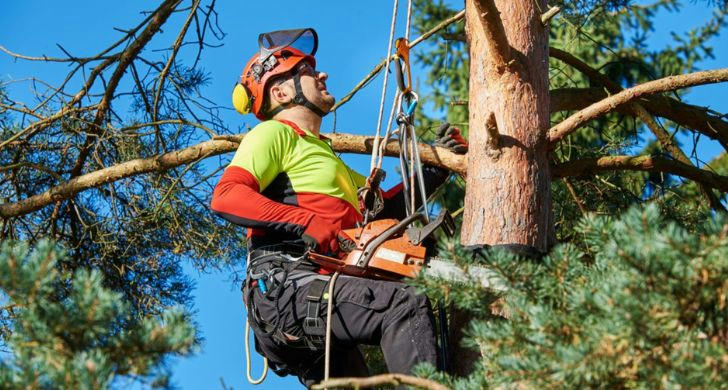Join an arborist, earning between $30,1800 and $64,210 per year
According to the U.S. Bureau of Labor Statistics, full-time arborists earn between $30,1800 and $64,210 per year. Professionals with more training or experience generally earn higher base salaries.

Certified Arborist Training Channels
Woodpecker Certified Arborist
To become a Woodpecker Certified Arborist, you typically need to:
- Gain Practical Experience: Start by working with a reputable tree care company to learn the necessary skills for tree care and maintenance.
- Complete Relevant Training: Take courses or seminars focused on arboriculture, tree biology, and safety practices. Many organizations offer training programs that can enhance your knowledge and skills.
- Certification Exam: Prepare for and pass the certification exam offered by a reputable arborist organization. This exam typically covers all aspects of tree care, including tree identification, health assessment, and treatment methods.
Becoming an Arborist
Age Requirements
Most states require arborists to be at least 18 years old when performing certain tasks, such as working at height, to ensure safety and legal compliance.
Experience and Training
People of all ages can qualify as arborists through training and internships. Many arborists switch careers or retrain at different stages of their careers.
Certification and Education
Becoming a certified arborist typically requires completing relevant education and training courses, which are not age-restricted.
Jobs in the Tree Care Industry
Arborist: Responsible for the health management of trees, including pruning, removal, and pest control. Requires professional knowledge and skills to ensure the growth and safety of trees.
Tree Trimmer: Focus on pruning and maintaining the shape and health of trees. Uses specialized tools to work at height to ensure the structural stability of trees.
Tree Climber: Performs tree pruning and removal using specific climbing techniques. Requires a good understanding of tree biodynamics to ensure safe operation.
Grounds Maintenance Worker: Responsible for the maintenance of the environment around trees, including clearing fallen leaves and weeds. May be required to operate heavy machinery such as mowers and tree chippers.
Sales/Consulting Arborist: Provides consulting services on tree care and helps clients select appropriate trees and care plans. Requires good communication skills and market knowledge to promote sales.
Tree Health Monitor: Monitors the health of trees and identifies pests, diseases, and environmental issues. Requires regular on-site inspections and data recording.
Tree Care Trainer: Responsible for training new employees and teaching tree care techniques and safety standards. Requires extensive industry experience and teaching ability.

How to Become a Certified Arborist
Becoming a certified arborist in the United States requires years of experience and knowledge. If you are already on the journey to becoming a certified arborist, follow these steps:
- Earn a High School Diploma or GED.
- Get a State License (if applicable).
- On-the-Job Training.
- Learn Basic Safety Knowledge for Arborists.
- Build Your Skills and Take Responsibility.
- Apply for an ISA Certificate.
What an Arborist (Tree Trimmer) Does
1. Tree Assessment
- Leaf Observation: Check the color, shape, and size of the leaves and look for signs of browning, spots, or insect damage.
- Trunk Inspection: Observe the surface of the trunk and look for cracks, rot, or bark loss.
- Root Assessment: If possible, check the health of the roots to ensure there is no rot or disease.
- Common Diseases: Identify common tree diseases such as powdery mildew, root rot, and leaf spot, and learn their symptoms and effects.
- Laboratory Testing: When necessary, collect samples and send them to the laboratory for pathogen testing to confirm the type of disease.
- Pest Identification: Identify common pests such as aphids, spider mites, and beetles, and assess their impact on trees.
- Monitoring Methods: Use tools such as sticky insect boards and magnifying glasses to make detailed observations and record the number and distribution of pests.
- Tree Stability: Check the degree of inclination of the tree, the stability of the root system, and assess whether there is a risk of lodging.
- Branch Structure: Observe the branch angles of the tree and identify weaknesses that may cause breakage.
2. Pruning and Trimming
- Pruning Tools: Use appropriate tools (such as hand shears, chain saws) to remove dead or diseased branches and ensure smooth cuts.
- Pruning Timing: Prune in the appropriate season to reduce the impact on tree growth, usually during the dormant period.
- Crown Pruning: Improve ventilation and light inthe crown by removing overcrowded branches to promote healthy growth.
- Selective Pruning: Selectively prune inner branches to maintain the natural shape of the tree.
- Aesthetic Considerations: Shape the tree to improve its ornamental value according to its species and growth habits.
- Structural Pruning: Ensure that the tree is structurally stable to avoid future growth problems.
- Low-Hanging Branch Treatment: Remove low-hanging branches that may hinder pedestrian or vehicle traffic to ensure safety.
- Use Safety Equipment: Use safety belts and other protective equipment when pruning at height to ensure safe operation.
3. Removing Trees
- Risk Assessment: Assess the health of the tree and the surrounding environment to determine the necessity and safety of removal.
- Make a Plan: Create a detailed removal plan, including the equipment and methods to be used.
- Equipment Selection: Select appropriate equipment (such as chain saws, cranes) based on the size and location of the tree.
- Safe Operation: Ensure that operators have received professional training and follow safe operating procedures.
- Root Excavation: After removing the tree, excavate the root system to ensure that the roots are completely removed to prevent the growth of new trees.
- Soil Restoration: Treat the soil after removal and add amendments to promote subsequent planting.
- Tree Disposal: Removed trees are crushed, recycled, or composted to reduce environmental impact.
- Site Cleaning: Ensure that the site is clean and tidy after removal to avoid any impact on the surrounding environment.

Residential Tree Trimming Annual Salary
Conclusion
Becoming an arborist is a rewarding career that involves a variety of tasks related to tree care and maintenance. With the right training, experience, and certification, individuals can contribute to the health and safety of trees in their communities while enjoying a fulfilling profession.
